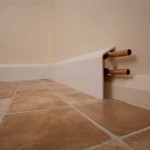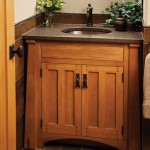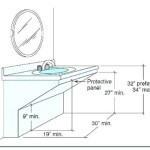How to Stop a Leaking Bathroom Faucet: A Comprehensive Guide
Leaking faucets are not only annoying but can also waste gallons of water, leading to higher utility bills. Fixing a leaking faucet is a relatively easy task that can be completed in a few simple steps. This comprehensive guide will provide you with all the information you need to stop a leaking bathroom faucet effectively. ### Essential Tools and Materials: Before you begin, gather the following tools and materials: - Adjustable wrench - Allen wrench - Screwdriver (Philips or flathead) - Replacement O-rings (if necessary) - Plumber's putty - Teflon tape - Rags or towels ### Step-by-Step Guide: #### 1. Identify the Source of the Leak: Determine where the water is leaking from. Check the handle, spout, or base of the faucet for signs of dripping or seeping. This will help you identify the specific component that needs repair. #### 2. Turn Off the Water Supply: Locate the water supply valves beneath the sink. Turn off both the hot and cold water valves to prevent flooding while repairing the faucet. #### 3. Remove the Handle: Most bathroom faucets have a handle that can be removed to access the internal components. Using an adjustable wrench or Allen wrench, carefully loosen the handle and remove it. #### 4. Replace the O-rings: O-rings are rubber seals that prevent leaks in faucets. Over time, they can become worn or damaged, leading to leaks. If you suspect the leak is coming from the handle, remove the O-rings and replace them with new ones. #### 5. Fix a Leaking Spout: If the water is leaking from the spout, it could be due to a loose or damaged aerator. Remove the aerator using a wrench and inspect it for damage. Clean or replace the aerator as needed. #### 6. Repair a Leaking Base: In some cases, the leak may be coming from the base of the faucet. This can be caused by loose or worn-out gaskets. To resolve this issue, apply a layer of plumber's putty around the base of the faucet and tighten the mounting nuts. #### 7. Use Teflon Tape: Teflon tape is a thin, self-adhesive tape that is used to seal threaded connections in faucets. When wrapping Teflon tape around threaded components, apply it in a clockwise direction 3-5 times, ensuring that the tape overlaps slightly. #### 8. Reassemble the Faucet: After replacing any necessary components or applying sealant, reassemble the faucet by reversing the disassembly steps. Tighten all connections securely using the appropriate tools. #### 9. Turn on the Water Supply: Turn on the water supply valves slowly and check for any leaks. If there are no leaks, the repair is complete. If leaks persist, double-check your connections and repeat the necessary steps. ### Tips for Preventing Future Leaks: - Regularly inspect your faucets for any signs of wear or damage. - Tighten loose handles or connections as needed. - Replace O-rings and gaskets proactively to prevent leaks. - Use aerators with flow restrictors to reduce water pressure and stress on the faucet. - If you have hard water, install a water softener to prevent scale buildup in the faucet's components.
How To Fix A Leaky Faucet True Value

How To Fix A Leaky Faucet Guides For Every Design And Style

How To Fix A Leaking Bathtub Faucet Diy Family Handyman

Leaking Faucet Tap What To Do Avoid Damage Watersmart

Part 1 Of 2 How To Fix A Dripping Faucet

5 Reasons Your Faucet Is Dripping Water How To Fix It

Steps You Can Take To Prevent A Leaking Faucet

How To Fix A Leaky Faucet The Home Depot

How To Fix A Leaky Faucet Guides For Every Design And Style

Faucet Repair How To A Leaky Bath
Related Posts







